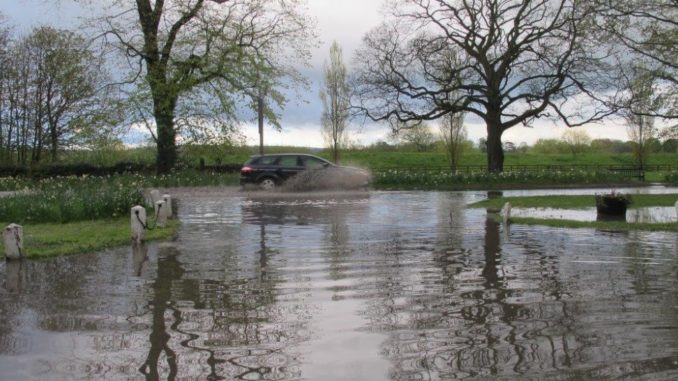
North Yorkshire County Council says it is pressing ahead with its commitment to mitigate flood risks at Great Ayton and elsewhere in the county.
The confirmation comes as the Environment Agency (EA) launches a consultation on its draft flood and coastal erosion risk management strategy for England.
The EA’s draft strategy sets out a vision for “a nation ready for, and resilient to, flooding and coastal change – today, tomorrow and to the year 2100”. Consultation began runs until 4 July.
The county council says its work to deliver its surface water flood risk programme will feed into the EA’s vision.
The authority said flood risks in North Yorkshire were dispersed across rural communities, so mitigating those risks requires bespoke and often expensive solutions.
North Yorkshire County Council is undertaking feasibility works, initially in its highest priority locations, which have historically faced repeated flood incidents, have seen significant internal property flooding and disruption to critical infrastructure.
The highest priority locations where studies are presently being undertaken to identify solutions, are Scarborough town, Malton, Norton and Old Malton, Rye villages and Great Ayton.
County Councillor Don Mackenzie, executive member for access, said: “The impact in these locations is well-known, with floods in recent years. It is good to see studies progressing.
“Often flood issues have inter-related causes and it requires close partnership working to deliver solutions. It is good to see that we are working closely across risk management authorities and that potential financial contributions are being identified by adopting this cooperative approach.”
Great Ayton experienced significant flooding in 2012, 2013 and 2016 from ground water, surface water, sewer flooding and the main river.
The flooding affected homes, businesses, infrastructure, sewers and roads.
The county council, Northumbrian Water and the EA are part of the Northumbria Integrated Drainage Partnership (NIDP), which has developed a study programme to investigate flood risk from all flooding sources in integrated studies.
A £150,000 NIDP study has started to examine the nature of the flood risk in Great Ayton and identify opportunities to address the risk.
These studies are funded with contributions from Northumbrian Water, the County Council, the Regional Flood and Coastal Committee Local Levy Fund and from national Flood and Coastal Grant in Aid funding secured via the Environment Agency.
The results are expected in November, at which point more detailed planning into identifying the scheme details, cost and funding will be developed. The work forms part of the Environment Agency’s national flood strategy.
Richard Robinson, of the Northumbria Integrated Drainage Partnership, said: “These NIDP studies are a great example of how organisations with an interest in flood risk are joining forces to demonstrate collaborative working, and identifying solutions to risk from all sources.
“The work will lead to the development of new schemes which can identify and address flood risk, and by working together we can understand issues relating to all partners with a hope of delivering a more integrated and efficient solution.”
Cllr Mackenzie added: “With flood risk investigations undertaken in more than 170 locations across the county since we became lead local flood authority, it is imperative to direct work at the places with most need and the studies being undertaken are demonstrating that this approach can achieve benefits targeted at our most at-risk communities.
“Our programme will continue and will aspire to address issues elsewhere. I look forward to seeing the results over the next few years.”
Anyone interested in taking part in the Environment Agency’s draft flood and coastal erosion risk management strategy for England consultation can visit https://consult.environment-agency.gov.uk/fcrm/national-strategy-public/.


Be the first to comment